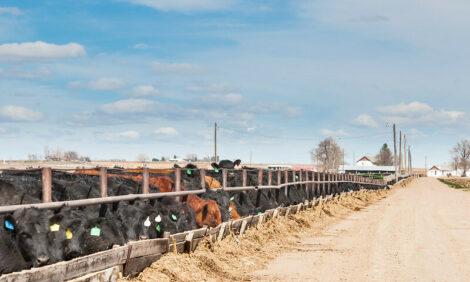



OECD and FAO See Lower Farm Prices
GLOBAL - Cereals are still at the core of what people eat, but diets are becoming higher in protein, fats and sugar in many parts of the world as incomes rise and urbanisation increases, with a special focus on India according to the latest Agricultural Outlook produced by the OECD and FAO.Agriculture has to provide not just more food for human consumption, but also raw material for industrial purposes, such as biofuels and animal feed.
The recent fall in prices of major crops is expected to continue over the next two years before stabilising at levels above the pre-2008 period, but markedly below recent peaks, the report says.
Demand for agricultural products is expected to remain firm while expanding at lower rates than in the past decade. Cereals are still at the core of what people eat, but diets are becoming higher in protein, fats and sugar in many parts of the world, as incomes rise and urbanisation increases.
The OECD-FAO Agricultural Outlook 2014-2023 says such changes, combined with a growing global population, will require substantial expansion of production over the coming decade. Led by Asia and Latin America, developing regions will account for more than 75 per cent of additional agricultural output over the next decade.
Presenting the report in Rome, OECD Secretary-General Angel Gurría said: "Agriculture markets are returning to more settled conditions after a period of unusually high prices. This has been helped by governments showing restraint in the use of trade measures. But we cannot be complacent. We must do more - on trade, on productivity, and to tackle poverty. Governments should provide social protection for the most vulnerable, and develop tools to help farmers manage risks and invest in agricultural productivity. Achieving gains in ways that are both inclusive and sustainable remains a formidable challenge."
FAO Director-General Jose Graziano da Silva said: "This year the Outlook’s message is more positive. Farmers reacted very rapidly to the high prices and increased their production so that now we also have more stocks available. We foresee that prices related to cereals will decrease for at least the next two years. The picture is different for meat and fish where we are facing growing demand. The good performance of the agricultural sector particularly in developing countries will contribute to the eradication of hunger and poverty."
In a special focus on India, the Outlook projects sustained food production and consumption growth, led by value-added sectors like dairy production and aquaculture. Investment in production technology and infrastructure together with subsidies in a range of areas have contributed to strong output expansion over the past decade, the report says, and pressure on resources is expected to reduce production growth rates over the coming years.
While remaining largely vegetarian, Indian diets will diversify. As consumption of cereals, milk and dairy products, fish, pulses, fruit and vegetables grows, the intake of food nutrients will improve. India is currently home to the largest number of food-insecure people in the world.
The Agricultural Outlook says global cereal production is projected to be 15 per cent higher by 2023 than in the 2011-13 period. The fastest production growth is expected to be oilseeds, at 26 per cent over the next 10 years. The expansion of coarse grain and oilseed production will be driven by strong demand for biofuels, particularly in developed countries, and growing feed requirements in developing regions.
The expansion of food crop production will be more moderate over the coming decade, the report says, with wheat output growing by around 12 per cent and rice by 14 per cent, well below the growth rates of the previous decade. Sugar production is expected to increase by 20 per cent over the coming decade, concentrated mainly in developing countries.
The Agricultural Outlook projects developments in a broad range of commodities over the coming decade:
- Cereals: World prices of major grains will ease early in the outlook period, boosting world
- trade. Stocks are projected to rise with rice inventories in Asia reaching record high levels.
- Oilseeds: The global share of cropland planted to oilseeds continues to increase albeit at a
- slower rate than in recent years as growing demand for vegetable oils pushes prices up.
- Sugar: After weakening in late 2013, prices will recover, driven by strong global demand.
- Exports from Brazil, the world's dominant sugar exporter, will be influenced by the ethanol market.
- Meat: Firm import demand from Asia, as well as herd rebuilding in North America support
- prices which are expected to remain above the average levels of the previous decade, when adjusted for inflation. Beef prices are seen rising to record levels. Poultry should overtake pork to become the most consumed meat product over the next 10 years.
- Dairy: Prices fall slightly from their current high levels due to sustained productivity gains
- in the major producing countries and resumed growth in China. India overtakes the European Union to become the largest milk producer in the world, building considerable skimmed milk powder exports.
- Fisheries: Aquaculture production growth will be concentrated in Asia, and will remain one of the fastest-growing food sectors, surpassing capture fisheries for human consumption in 2014.
- Biofuels: The consumption and production levels of biofuels are expected to increase by more than 50 per cent, led by sugar-based ethanol and biodiesel. The ethanol price increases in line with the crude oil price, while the biodiesel price more closely follows the path of vegetable oil prices.
- Cotton: The expected release of accumulated global stocks will boost consumption, helped by lower prices which should then recover by 2023.
TheCattleSite News Desk


